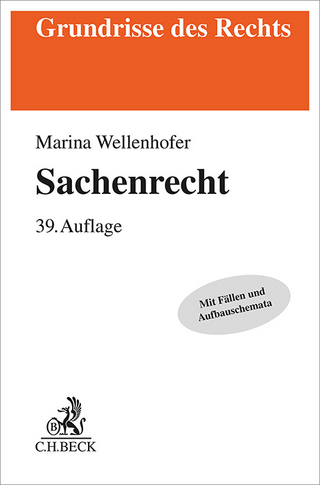
Land Use and Sustainable Development Law, Cases and Materials
Seiten
2017
|
9th Revised edition
Foundation Press (Verlag)
978-1-68328-407-9 (ISBN)
Foundation Press (Verlag)
978-1-68328-407-9 (ISBN)
The new edition enables professors to teach a broad range of traditional and innovative land use law subjects, ranging from zoning and site planning to sustainable development. For professors and students interested in discovering effective methods for dealing with the worsening threat of climate change, workable strategies and needed encouragement are provided.
The new edition enables professors to teach a broad range of traditional and innovative land use law subjects, ranging from zoning and site planning to sustainable development.
The first six chapters of the book focus on traditional practice areas in land use regulation at the state and local levels, and includes a full range of federal First and Fifth Amendment issues as well as preemption (all from the existing chapters in the book which have updated notes/commentary and a sprinkling of new principal cases, enough to modernize the book without requiring significant teaching overhauls). For a nuts-and-bolts approach to land use law the first two-thirds of the book will fully cover a three-credit course.
The next three chapters explore land use techniques that go beyond traditional planning and Euclidean zoning such as smart growth, transit-oriented development, new urbanism, and form based zoning. Energy and building codes that address environmental and social concerns are explored, as is the topic of local environmental law that includes: aquifer, wetlands, habitat, and steep slopes protection; storm water control; and floodplains management. How environmental impact review, biological sequestration, and climate change mitigation integrate with local land use regulation is also explored. The book ends with a focus on the critical connection between human settlement patterns-the result of local zoning and land use plans-and climate change management, where students examine methods employed by local governments, with state encouragement, to use land use planning and regulation to design buildings, neighborhoods, cities, and regions to reduce energy and fossil fuel consumption and lower carbon dioxide emissions. For professors and students interested in discovering effective methods for dealing with the worsening threat of climate change, workable strategies and needed encouragement are provided. The last third of the book works well for faculty who wish to challenge students to creatively apply the tools they have learned about to address cutting edge issues facing communities. Faculty have used this material in the basic land use course, as a one credit add-on, and as material for an advanced land use course (making it convenient for students to keep the book).
The new edition enables professors to teach a broad range of traditional and innovative land use law subjects, ranging from zoning and site planning to sustainable development.
The first six chapters of the book focus on traditional practice areas in land use regulation at the state and local levels, and includes a full range of federal First and Fifth Amendment issues as well as preemption (all from the existing chapters in the book which have updated notes/commentary and a sprinkling of new principal cases, enough to modernize the book without requiring significant teaching overhauls). For a nuts-and-bolts approach to land use law the first two-thirds of the book will fully cover a three-credit course.
The next three chapters explore land use techniques that go beyond traditional planning and Euclidean zoning such as smart growth, transit-oriented development, new urbanism, and form based zoning. Energy and building codes that address environmental and social concerns are explored, as is the topic of local environmental law that includes: aquifer, wetlands, habitat, and steep slopes protection; storm water control; and floodplains management. How environmental impact review, biological sequestration, and climate change mitigation integrate with local land use regulation is also explored. The book ends with a focus on the critical connection between human settlement patterns-the result of local zoning and land use plans-and climate change management, where students examine methods employed by local governments, with state encouragement, to use land use planning and regulation to design buildings, neighborhoods, cities, and regions to reduce energy and fossil fuel consumption and lower carbon dioxide emissions. For professors and students interested in discovering effective methods for dealing with the worsening threat of climate change, workable strategies and needed encouragement are provided. The last third of the book works well for faculty who wish to challenge students to creatively apply the tools they have learned about to address cutting edge issues facing communities. Faculty have used this material in the basic land use course, as a one credit add-on, and as material for an advanced land use course (making it convenient for students to keep the book).
| Erscheinungsdatum | 10.08.2017 |
|---|---|
| Reihe/Serie | American Casebook Series |
| Verlagsort | Minnesota |
| Sprache | englisch |
| Maße | 191 x 254 mm |
| Gewicht | 1865 g |
| Themenwelt | Recht / Steuern ► EU / Internationales Recht |
| Recht / Steuern ► Privatrecht / Bürgerliches Recht ► Sachenrecht | |
| ISBN-10 | 1-68328-407-0 / 1683284070 |
| ISBN-13 | 978-1-68328-407-9 / 9781683284079 |
| Zustand | Neuware |
| Haben Sie eine Frage zum Produkt? |
Mehr entdecken
aus dem Bereich
aus dem Bereich
Gesetz über das Wohnungseigentum und das Dauerwohnrecht : Kommentar
Buch | Hardcover (2025)
C.H.Beck (Verlag)
89,00 €


